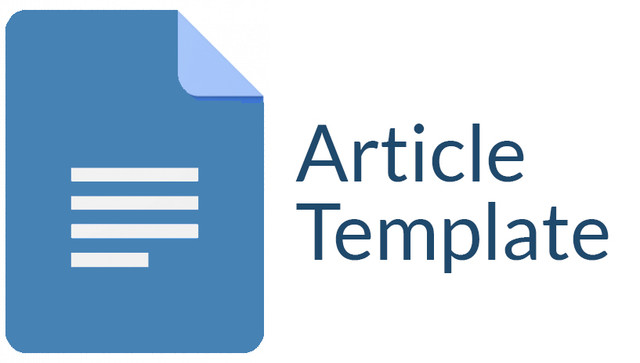Eksistensi Pembelajaran Al Qur’an Berbasis Ramah ANAK (Studi Kasus Penerapan Program Munaqashah Metode Ummi di TPQ Mafatihul Huda Mantup)
DOI:
https://doi.org/10.30736/adk.v19i1.2498Keywords:
Munaqashah Program, Ummi Method, Existence of the Qur’an Learning, Child Friendly Based.Abstract
This thesis discusses the implementation of the Ummi Method Munaqashah Program as a form of children’s domain-based learning of the Qur’an at TPQ Mafatihul Huda Mantup Lamongan using qualitative research and a descriptive approach. The aim of this research is to determine the application of the Ummi method munaqashah program as a form of existence of child-friendly based Al Qur’an learning at TPQ Mafatihul Huda Mantup Lamongan and the supporting and inhibiting factors of implementing the Ummi method munaqashah program as a form of existence of friendly based Al Qur’an learning children at TPQ Mafatihul Huda Mantup Lamongan. To obtain data in this research, researchers used data collection techniques including: observation, interviews, and documentation. Then the analysis technique uses Miles and Huberman’s interactive model including data collection, data condensation, data presentation and drawing conclusions. The results of this research: 1) The implementation of the Ummi method munaqashah program is carried out once a year as a form of the existence of Al Qur’an learning and has brought many changes to the reading of TPQ Mafatihul Huda students for the better, this approach provides a fun and effective approach for students. Students in accordance with child-friendly based learning. The stages of the munaqashah process are: pra munaqashah, munaqashah tartil, munaqashah tahfidz, khotmil qur’an and Imtihan 2) Factors that support this munaqashah program are support from foundations, certified ustadz and ustadzah, the role of parents, guidance and additional time for preparations for munaqashah. The inhibiting factors are a lack of motivation to learn, the influence of gadgets, and children’s abilities that do not meet targets. However, there needs to be a joint effort to improve the quality of learning and support given to students between TPQ, parents and teachers as the most important supporting and inhibiting factors
Downloads
References
Al Qadhi, Abdulfattah. Al Burhan Fi Tajwid, (Al Azhar: Al Mahmudia, 1964)
Al-Anshari, Zakariyya bin Muhammad. Kitab Syahru Al Jazariyyah Syaikhul Islam, (Darul Kutub Al-Ilmiyyah, 2023).
Aziz, Abdul. “Pedoman Dauroh Al Qur’an”. Jakarta, Markas Al Qur’an, 2015.
Bagus, Lorens. Kamus Filsafat. Jakarta: Gramedia Pustaka Utama, 2005.
Fahreza, Raya. “6 Langkah Lancar Membaca Al Qur’an”. Yogyakarta: Mutiara Media, 2008.
Hariyatmi, “Implementasi Pendidikan Karakter Melalui Kegiatan Munaqosah Tahfizul Qur’an,” Surakarta: Fakultas Keguruan dan Ilmu Pendidikan UMS, Buletin KKN Pendidikan, Vol, 1. No,2. 2019.
Masruri, Modul Sertifikasi Guru Al Qur’an Metode Ummi.
Nata, Abudin. Filsafat Pendidikan Islam”. Jakarta: Logos Wacana Ilmu, 1997.
Ngadiyo. ”Homeschooling, Melejitkan Potensi Anak.” Majalah Embun, Edisi 49-V-Rajab 1434. Mei 2013.
Pane, Aprida. “Belajar dan Pembelajaran”, Jurnal Kajian Ilmu-Ilmu Keislaman, Vol. III, No. II, 2017.
Republika, “65 Persen Muslim Indonesia tidak Bisa Baca Al-Qur’an”, (https://www.m.republika.co.id).
Sangaji, Muhammad Hafizh. Skripsi: “Sistem Pendukung Keputusan Munaqosyah Terbaik Pada Siswa SD Islam Bunga Bangsa Menggunakan Metode Multi Attribute Utility Theory (Maut)”. Samarinda: Sekolah Tinggi Manajemen Informatika Dan Komputer Widya Cipta Dharma, 2023.
Shihab, Muhammad Quraish. Membumikan Al Qur’an: Fungsi dan Peran Wahyu dalam Kehidupan Masyarakat, (Bandung: Mizan, 1994).
Suwaid, Ayman Rusdi. At Tajwid al Mushawwar, Damaskus: Maktabah Ibn Al Jazary, 2011.
Cohen, J. W. (1988). Statistical power analysis for behavioural sciences (2nd ed.), Hilladale, Lawrence Erlbaum Associates, New Jersey.
Creswell, J. W. (1994). Research design. Qualitative and quantitative approaches. London: Sage.
Eisenhardt, K.M., & Martin, J.A. (2000). Dynamic capabilities: What are they? Strategic Management Journal, 21, 1105–1121.
Ekah, U.J., & Iloke, J. (2022). Performance evaluation of key performance indicators for UMTS Networks in Calabar, Nigeria. GSC Advanced Research and Reviews, 10(01), 047–052.
Ezenwakwelu, C. A., Akpan, E. E., & Ogbogu-Asogwa, O. I. (2021). Enabling service innovation through dynamic capabilities: Insight from telecommunication firms. International Journal of Business and Management Invention, 10(5), 54-63.
Fincham, J. (2008). Response rates and responsiveness for surveys, standards, and the journal. American Journal of Pharmaceutical Education (Article 43), 72(2), 1-3.
Downloads
Published
How to Cite
Issue
Section
License
Copyright (c) 2025 Wahyuni Ahadiyah, Ulil Albab, Denia Venisa Putri

This work is licensed under a Creative Commons Attribution-ShareAlike 4.0 International License.













